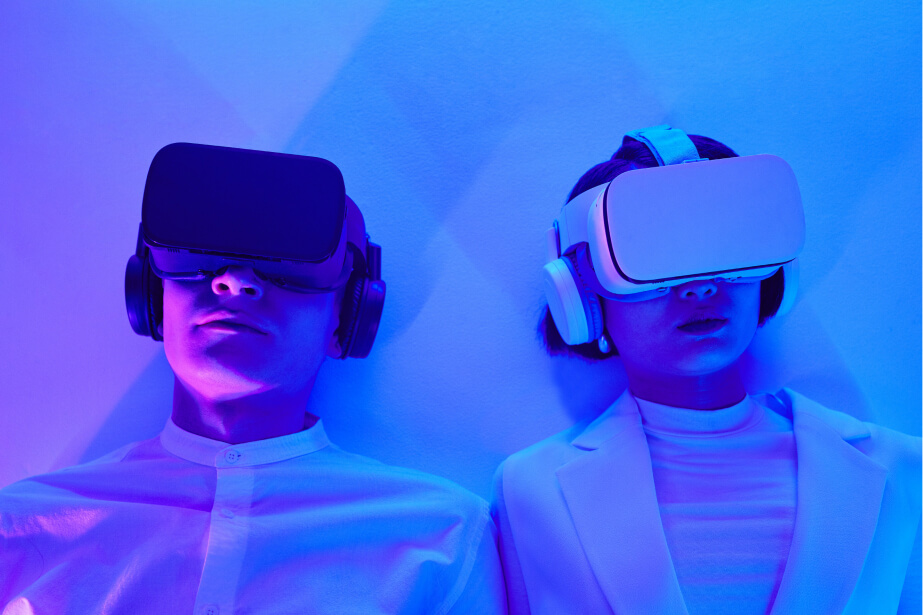
On APRIL 19, 2022
How Does Live Shopping Improve the Customer Experience?
$429 billion. That’s what’s generated by shopping on social networks around the world. And this amount will likely see exceptional growth, tripling by 2025 (Accenture, 2021). For companies and their consumers, the trend confirms that shopping on social networks is seductive. And the conversions follow, when certain functionalities like live shopping are used.
Live shopping allows users to buy directly on social networks, through streaming videos. Since the digital transformation and the Covid-19 health crisis, this type of connected and instant commerce is in the midst of a boom.
But concretely, what are the new expectations of modern consumers? What are the impacts of live shopping on the customer experience? And what are the inspiring companies to follow, who have already leveraged live streaming for sales performance?
Table of content
- What is live shopping?
- Live shopping and new consumer expectations
- Live shopping: 3 examples of companies who are surfing the trend
- Ready to improve customer experience, thanks to live shopping?
What is live shopping?
Live shopping: a definition
Can we say that live shopping represents the next retail revolution? The response already seems like a yes. After e-commerce (mostly from a computer) and m-commerce (making a purchase from one’s mobile), all attention is now turning towards live commerce. This new marketing trend consists of using social platforms, and their promising functionalities, like live video.
Like TV shopping, live shopping relies on video. It works by bringing together the best of two words, that of commerce and that of social networks in order to propose a new type of shopping that’s more dynamic, connected and in real time.
Thanks to live shopping, users can purchase products or services directly via social platforms. As such, all the steps of the customer journey become more and more digital and seamless. And already, users are not just using Facebook, Instagram or TikTok in order to discover brands, get information or be inspired by online content; they can also conduct transactions through “lives” organized on the social networks, without having to go to a store or a company’s website.
Live shopping vs. Social Shopping: What are the differences?
The jargon around the new kinds of connected commerce is getting richer every day. And often the terms “social shopping” and “live shopping” get confused. However, they are different:
- Social shopping is a new sales channel that relies on social networks to sell products or services. Thanks to social shopping, brands can promote and sell on platforms like Facebook or Instagram. Certain functionalities allow users to purchase products directly by clicking on photos or ads, without leaving the platform.
- Live shopping is more specific than social shopping. With live shopping, brands can promote and sell their products live, through video. This new type of sales via streaming is synonymous with instantaneity. Online and mobile users can watch video content and conduct a transaction in real time.
To sum up, live shopping distinguishes itself through the broadcast of live videos on social networks, whereas social shopping includes different techniques on social platforms. Leaders may leverage an event management system to streamline live shopping, enabling interactive engagement and seamless checkout.
Live shopping and new consumer expectations
The origins of live shopping
At the origins of this live shopping trend, we find the Chinese e-commerce giant: Alibaba.
On November 11, 2015, the company organized a 24-hour event to celebrate “Singles’ Day.” Alibaba tested a new form of live shopping, on national TV, on their site and in their app. This multichannel operation was a success: Over 14 billion dollars in sales were recorded that day, compared with 5.4 billion on the same day in 2013.
The following year, Alibaba launched Taobao Live, a live streaming platform. Quickly, this tool concretized the success of live streaming for commercial purposes. In 2020, Taobao live recorded 60 billion dollars in gross sales, with 150 million active users.
Already, the terrain of live shopping is being occupied by other actors like the popular social platforms, TikTok, Facebook, Youtube and Snapchat. Since the Covid-19 crisis and the boom of the digital economy, numerous brands around the world have come to rely on these platforms to propose live shopping, or propose their own platforms!
This boom goes hand in hand with the new expectations and uses of modern-day consumers, ready to transform their customer experiences.

Live shopping: a trend that responds to new consumer uses
On a traditional e-commerce site, the conversation rate varies between 1 and 1.5%. With a live shopping experience, this rate explodes and varies between 15 and 30% on average (Source : Gartner, KPMG et Alibaba, 2021). And if the users are about 30 times more likely to buy, it’s because the format responds to their new uses.
In effect, streaming video is a format in the spirit of our time, highly appreciated by increasingly connected consumers. The dynamic, transparent and authentic qualities of video are seductive.
Furthermore, because these shopping events are broadcast live, the feeling of trust grows. Products can be seen in detail, in real time and without deception. This notion of immediacy is key: 66% of customers say that they expect companies to communicate with them in real time, according to Salesforce.
Brands can also call upon influencers to enrich their live events. In a live shopping event, the presence of an influencer can have multiple benefits:
- Make the brand benefit from its engaged audience
- Humanize the customer experience, through personalized recommendations
- Create a link of trust that leads customers more easily to make a purchase
In terms of demographics, live shopping (with or without influencers) mainly seduces Gen Z and Millennial consumers. At the same time, with health restrictions imposed in certain countries, and the digital commerce boom, other profiles have begun taking interested in this type of social media shopping experiences. And there is no lack for demand: According to Facebook IQ (2020), 24% of adults outside of China would like to discover new products through a live stream with a brand rep, and 23% would prefer a livestream with an influencer.
The benefits of live shopping for the customer experience
The impacts of live shopping on the customer experience are many. So if you’re still not sure about betting on this sales channel, here are the results you could obtain:
Reinforce your customer relations
Direct sales are a golden lever that can help support sustainable and trusting relationships with customers. This innovative format can help stimulate interaction, to communicate in a more personalized way and to emerge from stagnant marketing or communication strategies.
With live shopping, consumers become “consumactors” and they can communicate with the brand during lives, asking questions, and acting in real-time, making those purchases!
Boost engagement and conversion rates
Live shopping is a participatory event, which can help multiply sales. Brand engagement increases thanks to this type of digital experience. According to McKinsey, certain companies appear to increase their engagement with younger audiences like Gen Z and Millennials by 20%.
This increase in engagement has a positive effect on customer satisfaction, customer loyalty and an increased conversion rate. To find new buyers or to improve current customer loyalty (all while increasing the average basket size), live commerce is an effective lever!
Facilitate the customer journey
Thanks to live shopping, the customer experience is becoming more fluid. The different steps of discovering a product, comparison and making a purchase are grouped together with less delay, facilitating the customer journey.
The ease of shopping on social networks is just the start when it comes to transforming customer experiences and journeys. Picture this: Tomorrow, shopping in the metaverse may become the norm. It’s paving the way for new experiences 2.0!
Improve customer satisfaction
Live shopping is an immersive sales channel that responds to new consumer demands. By bringing together several advantages (instantaneity, interactivity, dynamism, immersion, rapidity and fluidity of the customer journey, etc.), the impact on customer satisfaction is immediate.
And at Smart Tribune, we can’t emphasize it enough: Delivering maximum satisfaction should be at the heart of all customer experience strategies.

Live shopping: 3 examples of companies who are surfing the trend
Samsung and its live shopping product launch
In 2020, Samsung worked with the Bambuser agency to organize a successful event: a live shopping campaign for the launch of its new foldable smartphone, the Galaxy Z Fold 2 5G. The idea was to captivate, inspire and engage its Gen Z and Millennial consumer targets.
The interactive program called “Samsung Live” showcased brand product experts who virtually interacted with the tele-spectators. The live attracted about 1,000 users in real time, and 4x more viewers who watched and made purchases via a replay. In the end the company was pleased to surpass its expectations in terms of conversion rates by +127%. It was a great success, attracting and seducing customers via a product launch.
Fnac Darty and its live-streaming influencer strategy
Fnac-Darty is one of the French pioneers of live streaming. By the end of 2020, the company had already produced 50 lives with 85 hours of content for consumers! This content generated over 2.7 million views in total, notably thanks to the help of famous influencers, who attended the events.
For example, for the launch of the latest Xbox, the brand featured French YouTuber Squeezie, who counts the most followers on the platform in France. The performance of this live shopping event was compared with French television, and with over 1 million views this Fnac-Darty live featuring Squeezie can be considered the 5th most popular French audiovisual channel (for content broadcast on a Friday night at 8 pm).
During this virtual, live event, sales multiplied by 40. Since, the brand continues to deliver exceptional, digital customer experience, notably thanks to the help of influencers or platforms like Twitch.
Sephora and Facebook, with live tutorials
For several years, the beauty universe has been innovating on social networks. Brands like Sephora bet on visual content to promote their products. And now, thanks to live shopping, visual content can be more interactive and more attractive. It’s been a winning bet for the promotion and sales of their products!
Sephora uses Facebook Live for its live shopping platform. The brand regularly organizes live events with representatives from certain brands (Lancôme, Too Faced, etc.) and with influencers. The format is ideal for producing tutorials in real-time, sharing tips, presenting products and encouraging direct sales.
To create a memorable customer experience, Sephora even launched “Live Shopping Fridays,” to have a regular meet-up with its community of customers. Thanks to this recurring event, there’s been an increase in customer satisfaction and in conversion rates!
Ready to improve customer experience, thanks to live shopping?
Among the trends from 2022 that will revolutionize customer experience, live shopping is at the top of the list. Thanks to streaming video this new type of social shopping can both seduce and convert.
The new demands of modern consumers are met by these more direct, interactive and immersive sales methods. The future of shopping was foretold: After e-commerce and m-commerce, live commerce has arrived to transform customer experiences!



.png)



